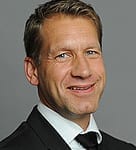Congress Newsletter 2021
EA21 Newsletter: 3D printing and virtual reality are helping anaesthesiologists prepare for surgery
- Israel study reports on 20 patients undergoing lung and chest surgery, including a 35-week-old fetus in the womb and 11 children.
- Anaesthesiologists used CT scans to create exact 3D printed plastic models and virtual reality reconstructions of patient airways on which to plan and practice anaesthetic procedures.

An anaesthesia team from the Tel Aviv Sourasky Medical Center in Israel report on the use of 3D technology to prepare for operations in 20 patients, including a 35-week-old fetus who required caesarean delivery and an 83-year old woman requiring open-heart surgery.
The majority of cases reported in the study involve children undergoing lung surgery, but the technology was also used to devise personalised plans for patients with large mediastinal masses (MM) in the chest that compress the heart and lung, including one pregnant woman.
“Using imaging scans, our anaesthesia team were able to print highly accurate models of patient airways on which to plan and practice their procedures”, explains Dr Ruth Shaylor, lead author of the report. “This is particularly important in children because they are smaller and so is our margin for error. Being able to see, hold and rotate a precise replica of their patient’s airway gives a new angle on their cases, providing information on the most appropriate airway equipment that might be invisible on a flat scan.”
A 3D model can be made in 30 minutes, and a single print can be turned around in 3-4 hours on entry-level 3D printers. Although the technology is widely used in other medical specialities like orthopaedic surgery, paediatric cardiology and dentistry, the use of 3D printing and virtual reality in anaesthesia has been primarily for education and training.
In 2019, the anaesthesia department at Tel Aviv Medical Center started using 3D printing and virtual reality modelling to routinely assess patients before surgery who had a potentially difficult airway due to narrowing or a large MM, as well as children requiring one-lung ventilation so surgery could be performed on the other lung.
To examine the potential benefits of these technologies to anaesthetic management, Shaylor and colleagues retrospectively reviewed all 20 patients referred for 3D modelling as part of their anaesthesia plan between July 2019 and July 2021. In general, 3D printing was used for airway cases (15 patients) with virtual reality for large MM cases (3 patients).
After reviewing virtual reality images, none of the MM patients had to have invasive procedures performed before being anaesthetised. In addition, there were no reports of any anaesthetic complications in patients referred for 3D modelling.
“3D printing is still underutilised for patient-specific pre-operative planning in anaesthesia”, says Dr Shaylor. “Our 2-year experience shows that with a specific plan in place, trial and error are reduced, and there is less trauma to the patient and wastage of equipment. The anaesthesiologists involved in these cases reported less stress, and by reviewing them with the surgeons, there was a greater understanding of the challenges involved for each patient. We also found that sharing these models with patients gave them a deeper understanding of their upcoming surgery and helped improve communication.”
Details on some cases:
7-year-old patient with Ewing’s Sarcoma
A 7-year-old girl with Ewing’s Sarcoma (a bone and soft tissue cancer) required an operation to remove part of her right lung. Anaesthesiologists were concerned that standard tubing and devices used for lung operations in older patients might not be appropriate. So CT scans were used to create a virtual reality programme of her airway and lungs and an exact 3D printed plastic model so they could formulate a personalised airway plan and familiarise themselves with the patient’s airway anatomy. The final airway plan was substantially different to the plan developed using standard imaging techniques. This reduced the number of attempts at lung isolation that might have otherwise been performed on the patient, and she made a good recovery.
35-week-old fetus with a mass pressing on their trachea
In order for the baby to be delivered safely, it had to be done via caesarean and the team had to put a breathing tube in before the umbilical cord was cut. The team made a 3D model from an MRI – not an easy task when your patient is standing on his head, sucking his thumb. The team then printed the trachea, tongue, jaw and mass, and practised the intubation technique before the operation.
Author Dr Ruth Shaylor, Tel Aviv Sourasky Medical Center, Israel can be contacted at: ruthsha@tlvmc.gov.il
For the full abstract click here
For the full poster click here
Read More of our special newsletter covering our virtual congress









